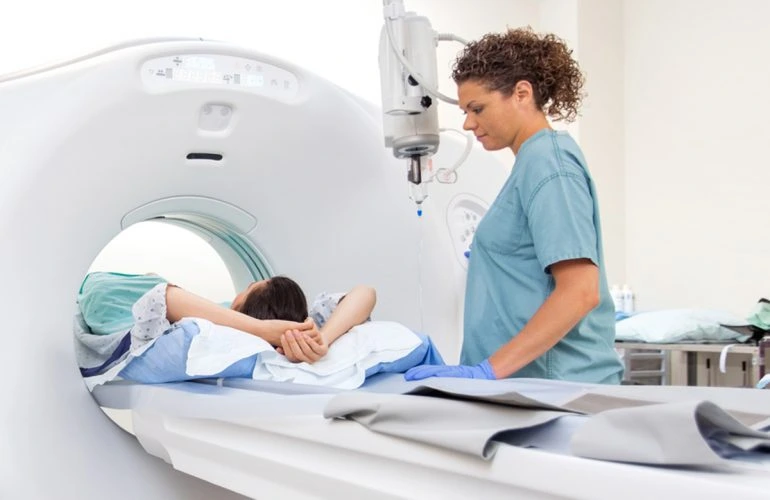Blastocyst Culture and Transfer
The growth of medical science has made it possible to achieve so many things that one could not have possibly imagined a few decades ago. The formulation of the liquid in which in vitro culture is done to grow the embryo has made it possible to grow the embryo beyond the usual 3-day time period. The embryo can now be cultured in vitro for up to 5 days until it becomes a blastocyst which is the final stage of the embryo’s development before it comes out of the egg by breaking the zona pellucida and then plant itself in the uterine wall.
Why Is It Done?
Embryo transfer on the fifth day, at the blastocyst stage, has higher pregnancy rates. There might be two conceivable explanations behind this:
Initially, transfer of the blastocyst to the uterus might be all the more physiologically suitable, since this imitates nature all the more intently, with the goal that the implantation rate might be higher. Additionally, holding up till the blastocyst stage enables the specialist to choose the best embryo since undesirable fetuses are probably going to arrest before they achieve this stage.
Blastocyst transfer fundamentally diminishes the likelihood of possibly dangerous twin or triplet birth. Higher implantation rates enable specialists to exchange fewer blastocysts – maybe just a single – decreasing or keeping away from multiple births and their related issues. Supernumerary blastocysts can likewise be effectively cryopreserved utilizing vitrification with the goal that pregnancies can be accomplished later.
Benefits Of the Blastocyst Method Over The Conventional Embryo Transfer Procedure
Previously, most embryo transfers were done on day two or day three. In any case, most great clinics have proceeded onward to doing day five (blastocyst) transfer routinely. Tragically, in India, this is as yet not the standard alternative, and a lot of IVF centers keep on transferring embryos on the second or third day. This is fundamentally in light of the fact that they’re not extremely confident about the capability of their research facility; and the capacity of their embryologist to culture eggs to day five. This is the reason they lean toward transferring the embryo into the uterus and legitimize this by telling the patient that it’s better to hatch it inside the uterus earlier. Notwithstanding, this has a considerable measure of drawbacks, and you should demand that your specialist complete a blastocyst transfer for you.
Blastocysts have a better chance of implantation, which implies the achievement rate with blastocyst transfer is higher as contrasted and Day 2 or 3 transfer. Since they’re more developed and have more cells, they have a higher probability. This additionally enables the specialist to decrease the number of embryos for transfer, so he can really exchange only maybe a couple of blastocysts and still have as great a pregnancy rate when contrasted with transferring three or four Day 3 embryos.
Additionally, since the specialist is exchanging just 1 – 2 blastocysts, you can freeze the additional blastocysts, which implies you get an opportunity to accomplish more cycles in the future. This makes it more practical in light of the fact that the total pregnancy rate goes up.
At last, the most vital reason you should demand a blastocyst transfer is that you don’t have to put yourself through that shocking 2-week hold-up of not being certain whether you will get pregnant or not on the off chance that you have low-quality embryos. Hence, if the IVF cycle flops in the wake of exchanging Day 3 embryos, you never know whether the issue was on the grounds that the fetus did not build up any further, or if there was some other explanation behind the fizzled implantation. All the more, you stay confused about whether your embryo will survive 5 days or not.
This is particularly valid for older aged women who have few eggs. Such women are at higher risk of a failed IVF since they will probably have embryos that may arrest and not reach the blastocyst age. Many of the embryos may have some genetic disorder.
These are the patients for whom a blastocyst transfer is very valuable. Nonetheless, they are frequently poor ovarian responders, and when the specialist gathers just 3-4 eggs and in this way gets not many embryos, he is exceptionally hesitant to develop them to the blastocyst stage. If it fails, the patient will point the finger at them for it. This is the reason they’d much rather transfer the embryos back in the uterus, and if the cycle fails, they can accuse this of “implantation failure”.
Notwithstanding, after the incipient organism exchange, the patient is tricked into feeling, “Admirably, perhaps this embryo may implant and grow into a baby”, which is the reason they are exceptionally confident during the waiting period. This false expectation is hurting. At the point when the cycle comes up short, they feel that it was their uterus that dismissed the embryo, and after that, they are encouraged to go down the surrogacy course. This is awful guidance which is totally imperfect on the grounds that the issue is with the egg and not with the uterus.
Shelat hospital follows an honest approach with all the patients and offers the best possible outcome in each case. This is paired with our extremely knowledgeable and experienced specialists who can help you achieve the best result in your IVF procedure. Consult with our experienced fertility specialists to know more about this procedure and discuss your options.



